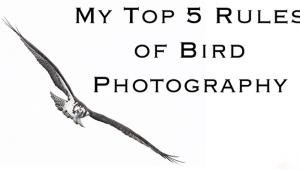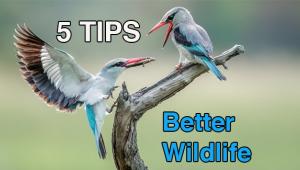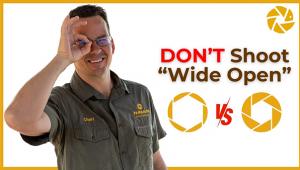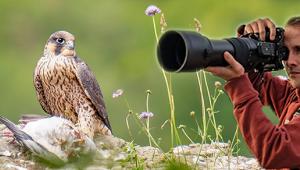The BEST Camera Settings for Beginning Wildlife Photographers (VIDEO)

If you're just getting started in photographing birds and other forms of wildlife, you've come to the right place. The following episode from the Safari Expert YouTube channel will set you straight by explaining the best camera settings to choose for various subjects and situations.
Instructor Villers Steyn is an experienced South African wildlife photography expert who regularly helps his clients configure their cameras properly while photographing animals on safari. But you don't have to travel to faraway locations, or photograph exotic animals, to take advantage of his advice. That's because his tips are equally valuable when shooting at a local park, game reserve, or even at the zoo.
It certainly would be nice if there was a single set of default settings that you could use for every scene, but like with other forms of photography, that's not the case. As Steyn explains, "you have to adjust your camera settings based upon what you see: the light, the subject and your goal in a specific situation."

That said, it certainly helps to begin with a good choice of go-to settings that you can quickly modify as needed. The best times to photograph wildlife are typically early morning and late afternoon when many animals are active and searching for a meal. When shooting shortly after dawn, when the light is really low, Steyn uses the Aperture Priority mode and choose the lowest f/stop provided by his lens.
He also recommends relatively high ISO settings like 1,600 or 3,200. As he explains, "the low f/stop lets in a lot of light, allowing the camera to choose the fastest shutter speed for the conditions. And the high ISO makes the camera's sensor nice and light sensitive." He also explains why you should set EV-Compensation to zero.
Steyn also makes sure that his autofocus mode is set to AI Servo/AF-C (focus tracking) for reasons he explains. When shooting in the afternoon he uses these same settings, other than dropping the high ISO to 400. As light levels fall he increase ISO accordingly.

There are a few more tips and tricks as the lesson proceeds, and they're equally important, so pay close attention and you won't be a novice wildlife photographer for long. Then take a look at Steyn's instructional YouTube channel, where you find more great advice for increasing your wildlife photography skills.
On a related note, be sure to check out an earlier tutorial from another expert who explains why "bold eyes" are the key to great wildlife photographs and how to enhance the effect when processing your images.
- Log in or register to post comments

















































